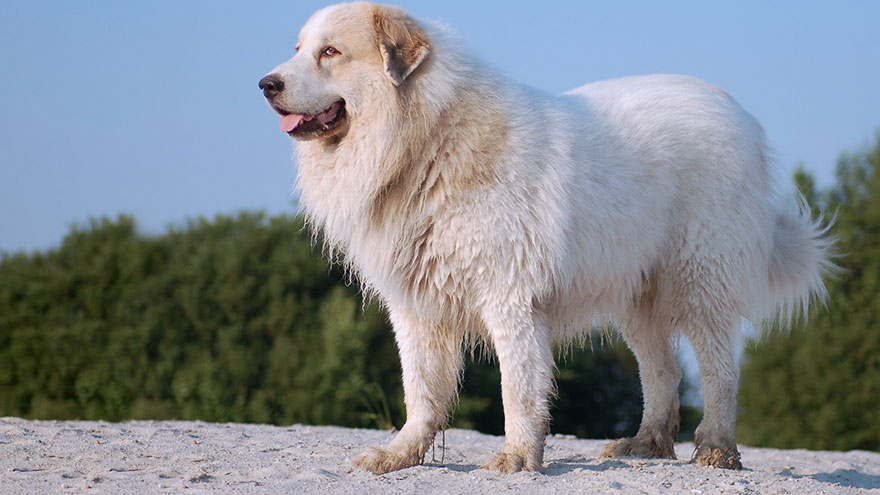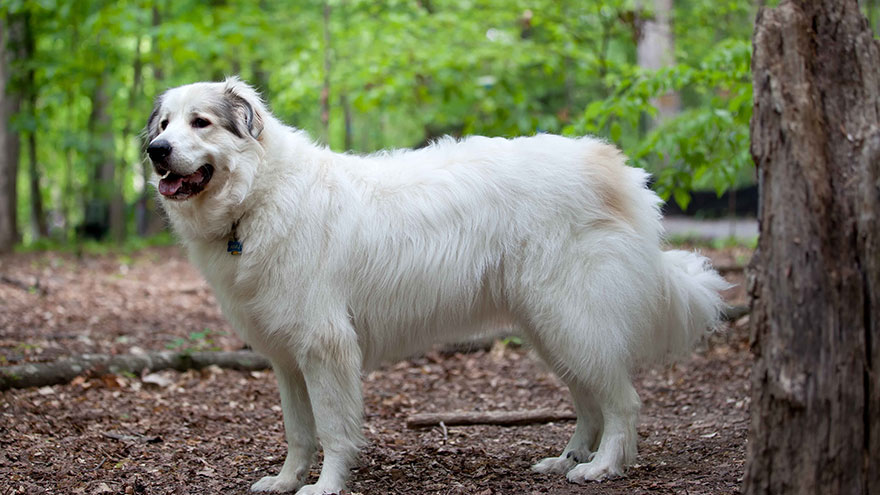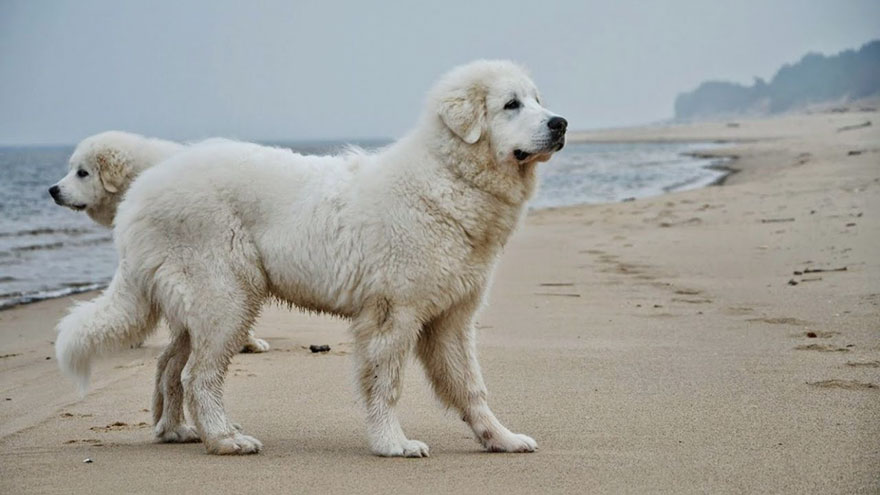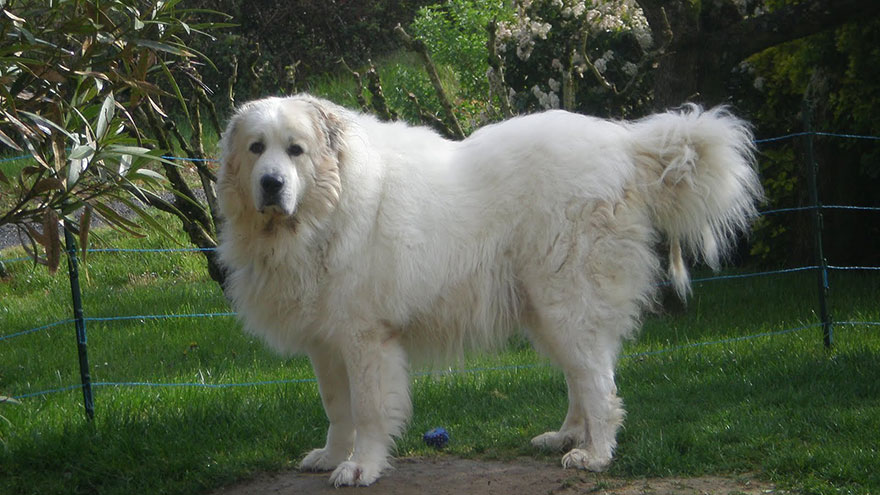Great Pyrenees Breed Information
This large breed with a full coat, the Great Pyrenees, is also known by other names, including Pyrenean Mountain Dog. Used as a sheep guard dog in France, the Pyrenees can also be an excellent watchdog and guard dog for the home.
Some believe the Great Pyrenees ancestors came from Asia or Siberia and there is evidence of the breed in Europe thousands of years ago.
Its coarse coat is weather resistant, enabling the Pyrenees to be outside in all sorts of weather. The male Great Pyrenees can stand up to 32 inches and weigh 100 pounds or more, so this is a very large animal that needs a lot of space to live comfortably.
However, with the proper training and a good family atmosphere, the Great Pyrenees can be a great pet.
Great Pyrenees Temperament
This breed has a majestic appearance because of its size and full coat. Additionally, the breed can be extremely protective of family members, leading some people to think of the dog as being an aggressive dog. In reality, the Pyrenees is quite often warm and friendly to people who treat him well. Starting with a puppy that is well socialized to be comfortable with people and other dogs is essential.
The Great Pyrenees has a natural tendency to guard and protect so they do not do well off the leash. In fact, this breed does best with a large yard and regular, long walks with its owner. The Great Pyrenees gets along very well with other animals belonging to the owner’s family.
You will also find that the dog has a wonderful ability to sense intruders or strangers posing threats. The breed is accustomed to hard work, working successfully as a rescue dog. Additionally, this dog is great in therapy and other activities that require a companion for humans.

Great Pyrenees Size and Color
The Pyrenees has the word “great” in its name for a reason. The male of the breed grows to about 32 inches, nearly three feet tall at the shoulder. In addition, males often weigh 100 pounds up to 130 pounds. Females typically reach a weight of 80 or 85 pounds while the average height for the female is about three inches shorter than the male, or about 29 inches.
Most Great Pyrenees are white, though some have patches of tan, gray, or pale yellow. The coat is full and coarse, with a soft, thick undercoat. A black nose and dark brown eyes are the common colors for the Great Pyrenees.

Great Pyrenees Feeding and Grooming Requirements
With larger dogs such as the Great Pyrenees, it is always good to pay special attention to the diet, both what you feed your dog and how much you feed your dog. In fact, we suggest you use fresh meats and some vegetables, always avoiding feeding low-priced commercial food that has high grain content. The reason is that many dog breeds are allergic to the excess amounts of corn, wheat, and soy found in cheaper foods.
In addition, large dogs are prone to bloat or stomach distortion, which can be a serious, even deadly, condition. This happens when the stomach twists and blocks the contents from passing through the intestines. Stomach gases and other complications can also be a real problem. Therefore, we recommend feeding smaller amounts of food multiple times during the day. This way, the dog does not gulp large amounts of food and water, which contributes to the bloat problem.
Grooming can be accomplished with a regular brushing to keep the coat in condition, but owners should pay attention to the undercoat when the dog is shedding. Bathing and dry shampoo is recommended only when necessary. Keep in mind that the Great Pyrenees shed heavily once a year so you want to be prepared to vacuum and brush more frequently.

Great Pyrenees Exercise Needs
With dogs as large and active as the Great Pyrenees, it is best to have a large yard for them to run in. You should also keep this breed on a leash when exercising away from home. The Pyrenees was bred as a working dog, guarding sheep and even pulling carts, because of its size and strength. Due to the need for space, this breed does not do very well in an apartment or small home.
Finally, this breed can be a bit aggressive toward other dogs and strangers if it feels you, your family, or even it is threatened so you want to make sure you have a tight hold on the leash.
The Great Pyrenees should not be tied outside and should not be left for long periods, as it tends to get bored and frustrated, resulting in mischievous and aggressive behavior.

Read More About Great Pyrenees
- Great Pyrenees : 10 Most Common Questions
- Great Pyrenees Training Guide
- Great Pyrenees Health Guide
- Owning a Great Pyrenees : Breeder Recommendations

